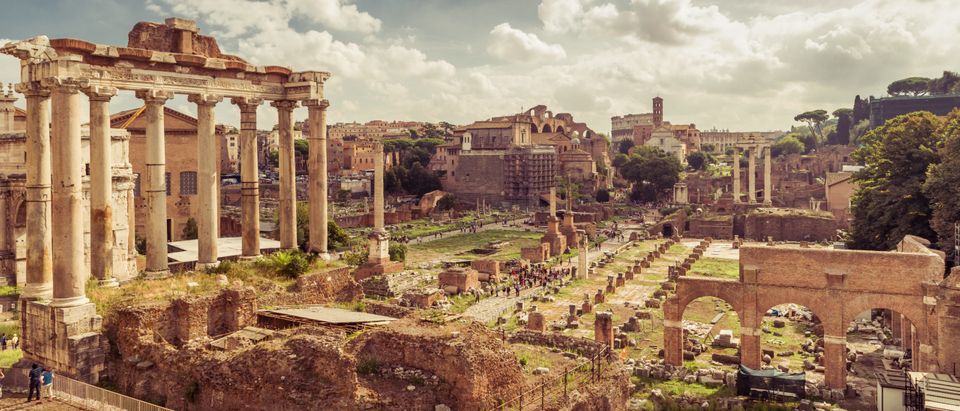All men everywhere were stunned Tuesday, as news emerged that their biggest obsession — The Roman Empire — received a major historical update.
A 13-year-long study conducted in Italy is changing the way we think about the collapse of the Roman Empire. A Cambridge-led team of archaeologists recently uncovered evidence in Interamna Lirenas that suggests regular people carried on thriving throughout the region well after what’s considered Rome’s major decline period, Cambridge wrote in a statement regarding the study.
Interamna Lirenas was “traditionally written off as a failed backwater in Central Italy,” the statement noted. But pottery analysis from the site suggests the region’s people didn’t fall into Rome’s steady decline until some 300 years after Big Archaeology initially assumed.
Further geological and geophysical analysis of the region revealed a highly complex town, with sprawling urban features. (RELATED: Archaeologists Turn On Another Group Of People Destroying Our History, And It Won’t End Well)
“Back in 2010, Professor Martin Millett and I started with a site so unpromising that no one had ever tried to excavate it. That’s very rare in Italy,” the study’s lead author, Dr. Alessandro Launaro said in the statement. “There was nothing on the surface, no visible evidence of buildings, just bits of broken pottery. But what we discovered wasn’t a backwater, far from it. We found a thriving town adapting to every challenge thrown at it for 900 years.”
Oldest Footprints In North America Official Dated, And Big Archaeology Ain’t Gonna Like It | @DailyCaller
🖕🏽 suck it @SAAorg 🖕🏽
so funny y’all call people racist when they’re legit doing the job y’all should be doing https://t.co/mgz3i6IrUn
— KAY SMYTHE (@KaySmythe) October 6, 2023
Launaro’s statement will likely come as a shock to anyone following the prevalence of data suggesting human activity and development was far more complex throughout history than the mainstream Big Archaeology losers will have you believe. In fact, there’s a good chance humans — either Homo sapiens, or one of our cousins — reached a peak level of technological development, on par or exceeding today’s standards, more than 10,000 years ago.
“We’re not saying that this town was special, it’s far more exciting than that. We think many other average Roman towns in Italy were just as resilient. It’s just that archaeologists have only recently begun to apply the right techniques and approaches to see this,” Launaro noted. (RELATED: The Oldest Human Activity In America May Have Just Been Discovered, And It’s Rewriting Our History)
Let’s hope he and his mindset toward actual scientific study are applied to other archaeological sites across the world. Since groups like the Society for American Archaeology and others literally won’t do their jobs and gather data on our ancient past, we are dependent on intelligent people like Launaro to put politics aside, and figure out where the heck we come from.
Also, this totally proves we can live without macro-globalized governance. Just sayin’.


